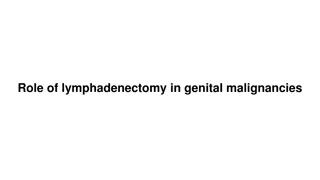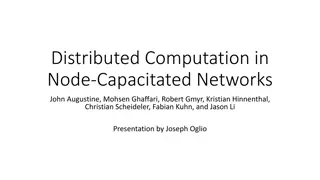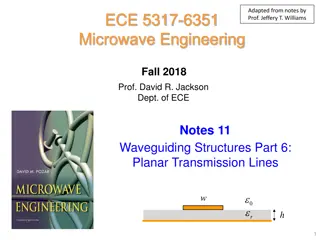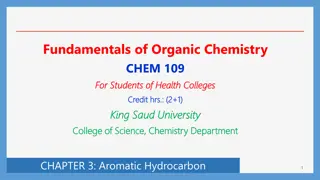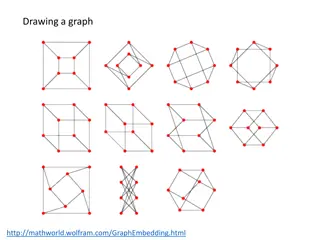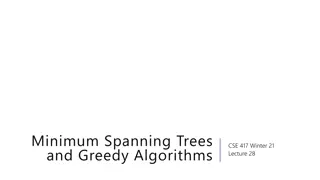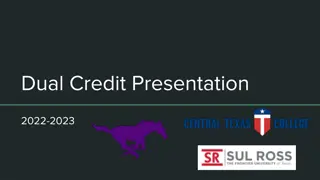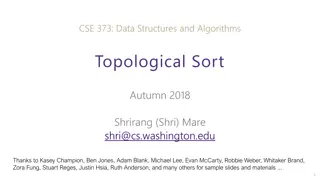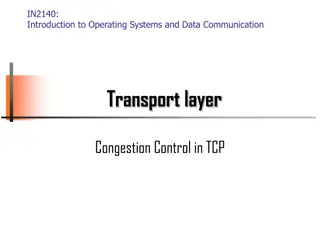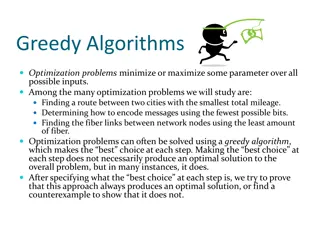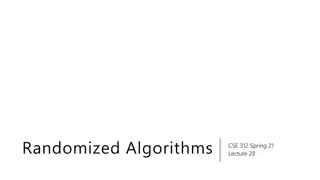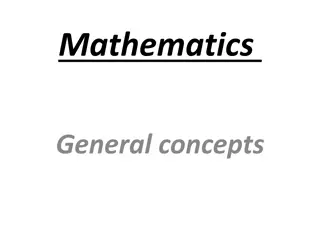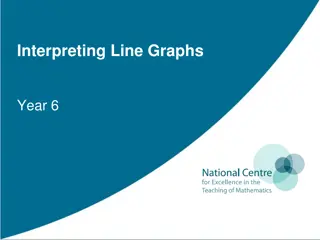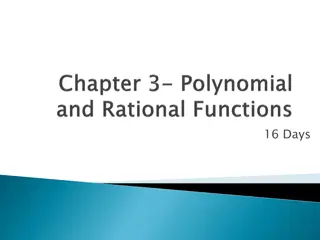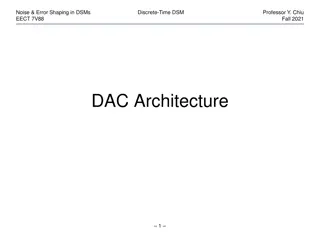Primal-Dual Algorithms for Node-Weighted Network Design in Planar Graphs
This research explores primal-dual algorithms for node-weighted network design in planar graphs, focusing on feedback vertex set problems, flavors and toppings of FVS, FVS in general graphs, and FVS in planar graphs. The study delves into NP-hard problems, approximation algorithms, and previous related works in the field.
Download Presentation

Please find below an Image/Link to download the presentation.
The content on the website is provided AS IS for your information and personal use only. It may not be sold, licensed, or shared on other websites without obtaining consent from the author. Download presentation by click this link. If you encounter any issues during the download, it is possible that the publisher has removed the file from their server.
E N D
Presentation Transcript
Primal-dual algorithms for node-weighted network design in planar graphs Grigory Yaroslavtsev Penn State (joint work with Piotr Berman)
Feedback Vertex Set Problems Given: a collection of cycles in a graph Goal: break them, removing a small # of vertices Example: Collection = All cycles X XX X Weighted vertices => remove set of min cost
FVS: Flavors and toppings All cycles = Feedback Vertex Set All Directed cycles = Directed FVS All odd-length cycles = Bipartization Cycles through a subset of vertices = Subset FVS X X
FVS in general graphs NP-hard (even in planar graph [Yannakakis]) Problem Approximation FVS 2 [Becker, Geiger; Bafna, Berman, Fujito] ?(log ?) [Garg, Vazirani, Yannakakis] Bipartization ? log ? log log ?[Even, Naor, Schieber, Sudan] Directed FVS Subset FVS 8 [Even, Naor, Zosin] MAX-SNP complete [Lewis, Yannakakis; Papadimitriou, Yannakakis] => 1.3606, if P ??[Dinur, Safra] 2 ? under UGC [Khot, Regev]
FVS in planar graphs (via primal-dual) NP-hard (even in planar graph [Yannakakis]) Problems Previous work This work FVS 10 [Bar-Yehuda, Geiger, Naor, Roth] 3 BIP, D-FVS, S-FVS [Goemans, Williamson, 96] 3 [Moldenhauer 11] 2.4 (2.57) Node-Weighted Steiner Forest 6 [Demaine, Hajiaghayi, Klein 09] More general class of problems
Bigger picture Graphs Weights General Vertices Planar Edges FeedbackEdgeSet in general graphs = Complement of MST Planar edge-weightedBIP and D-FVS are also in P Planaredge-weightedSteiner Forest has a PTAS[Bateni, Hajiaghayi, Marx, STOC 11] PlanarunweightedFeedback Vertex Set has a PTAS [Baker; Demaine, Hajiaghayi, SODA 05]
Class 1: Uncrossing property Uncrossing: ? ? ? ? ?? ?? ? ? ? ? Uncrossing property of a family of cycles ?: For every two crossing cycles ??,?? ?, one of their two uncrossings has ? ?,? ? ?. Holds for all FVS problems, crucial for the algorithm of GW
Proper functions [GW, DHK] A function ?:2? 0,1 is proper if ? = 0, Symmetry: ? ? = ?(? ?) Disjointness: If ?? ??= and ? ?? = ? ?? = 0=> ?( ) ?? = 0 ?? A set ? ? is active, if ? ? = 1 Boundary ? ? : ? ?(?) A boundary ? ? ? is active, if ? is active
Class 2: Hitting set IP [DHK] The class of problems: Minimize: ? V ? ? ? ? Subject to: ? (?) ? ? ?(?), for all ? ? ?? {0,1}, where ? is a proper function Theorem:? is proper => the collection of all active boundaries forms an uncrossable family (requires triangulation) Proof sketch: ? is proper => in one of the cases both interior sets are active => their boundaries are active ? ? ? ? ?? ?? ? ? ? ?
Class 1 = Class 2 Example: Node-Weighted Steiner Forest Connect pairs (??,??)via a subset of nodes of min cost Proper function ?(?) = 1 iff |? {??,??}| = 1 for some i. ?? ?? ? ?? ?? ?? ?? ?? ??
Primal-dual method (local-ratio version) Given: G (graph), w (weights), ?(cycles) ? = ? ? = set of all vertices of zero weight While ? is not a hitting set for ? ? = collection of cycles returned by oracle Violation (G, C, ?) ??? = # of cycles in M, which contain ? ? ? ??? ??? ? ? = ? ? min ? ? ? ? = set of all vertices of zero weight ? Return a minimal hitting set ? ? for ?
Oracle 1 = Face-minimal cycles [GW] Example for Subset FVS with ? = ?: Oracle returns all gray cycles => all white nodes are selected Cost = 3 * # blocks, OPT (1 + ?) * # blocks
Oracle 2 = Pocket removal [GW] Pocket defined by two cycles: region between their common points containing another cycle New oracle: no pocket => all face-minimal cycles, otherwise run recursively inside any pocket. Our analysis: ? =?? ? ?.??
Oracle 3 = Triple pocket removal Triple pocket = region defined by three cycles Analysis: ? = ?.?
Open problems For our class of node-weighted problems: Big question: APX-hardness or a PTAS? Integrality gap = 2, how to approach it? Pockets of higher multiplicities are harder to analyze Pockets cannot go beyond 2 + ?
Applications and ramifications Applications: from maintenance of power networks to computational sustainability Example: VLSI design. Primal-dual approximation algorithms of Goemans and Williamson are competitive with heuristics [Kahng, Vaya, Zelikovsky] Connections with bounds on the size of FVS Conjectures of Akiyama and Watanabe and Gallai and Younger [see GW for more details]
Approximation factor Theorem [GW 96]: If for any minimal solution H the set M returned by the oracle satisfies: ??? ? ? , ? ? then the primal-dual algorithm has approximation ?. Examples of oracles: Single cycle: ? ?? [Bar-Yehuda, Geiger, Naor, Roth] Single cycle: ? 5 [Goemans, Williamson] Collection of all face-minimal cycles: ? 3[Goemans, Williamson]








